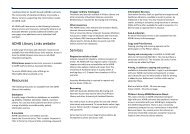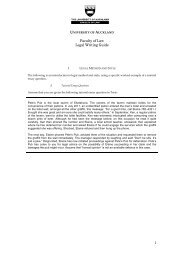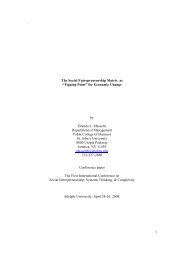STATISTICS â UNDERSTANDING HYPOTHESIS TESTS
STATISTICS â UNDERSTANDING HYPOTHESIS TESTS
STATISTICS â UNDERSTANDING HYPOTHESIS TESTS
Create successful ePaper yourself
Turn your PDF publications into a flip-book with our unique Google optimized e-Paper software.
1.Step 7Statistics – Understanding Hypothesis Tests:Proportions2014The P-value measures the strength of evidence against the null hypothesis,H 0 . The smaller the P-value, the stronger the evidence against H 0 .The are two ways of interpreting the P-value:1. As a description of the strength of evidence against H 0 :P-valueEvidenceagainst H 0> 0.12 None 0.10Weak 0.05Some 0.01Strong< 0.001 Very Strong2. As a description of the test result as (statistically) significant ornonsignificant.A test result is significant when the P-value is “small enough”; usually weopt for any P-values less than 0.05 (5%):Testing at a 5% level of significance:P-value Test result Action< 0.05 Significant Reject H 0 in favour of H 1> 0.05 Nonsignificant Do not reject H 0Testing can be done at any level of significance; 1% is common but 5%what most researchers use.The level of significance is an error rate; and can be thought of as thefalse alarm rate: i.e. it is the proportion of the time that a true nullhypothesis will be rejected (and the proportion of the time that a falsenull hypothesis will not be rejected).© Libraries and Learning Services - Student Learning Services (Tā te Ākonga) Page 15 of 44The University of Auckland
















